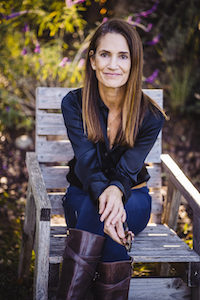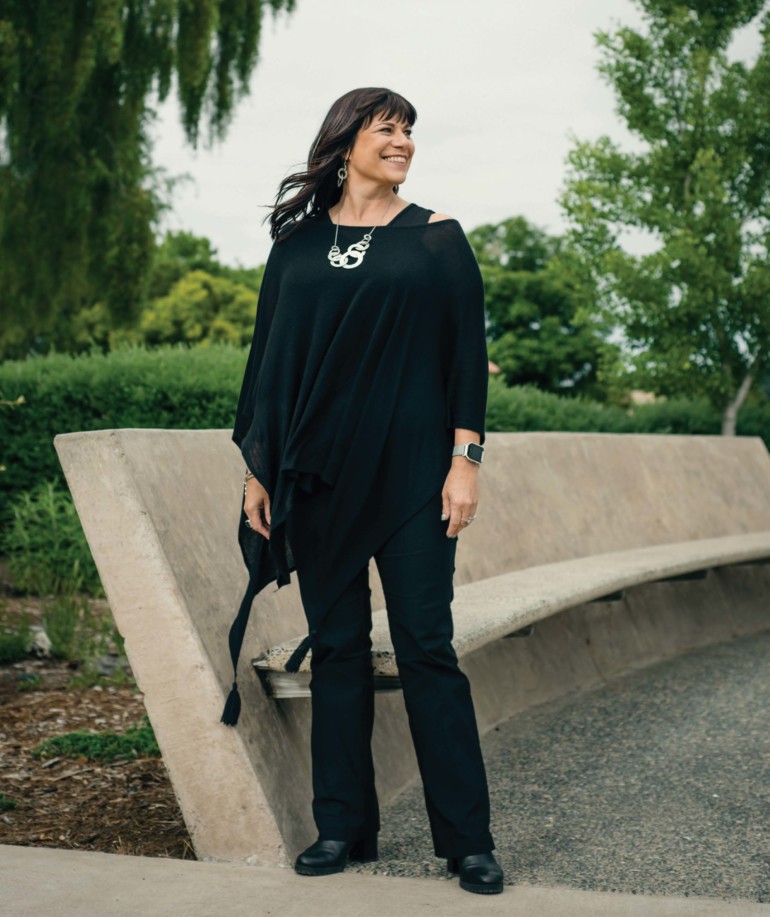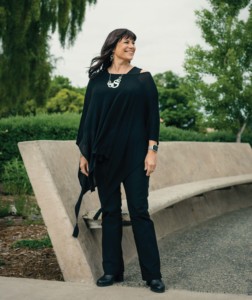ON THE LAST day of August, 2014, Gabriella Calicchio arrived in her new office at the Marin Center to begin her job as director of Marin County Cultural and Visitor Services. That was the day her markedly adventurous and creative career in the arts circled back to Marin County, the place the Vermont native met her husband and the place she describes as her “true home.”
The chronology of the decades that led Calicchio to her current role as chief advocate for the arts in Marin County reads like an epic journey, almost 20 years of arts leadership experience spanning the globe from England to Australia, from Boston to the Bay Area and then back to Minneapolis. In 2011 Calicchio, then the managing director for the Children’s Theatre Company in Minneapolis, was beckoned to San Francisco to run the Walt Disney Family Museum. Three years later, when previous Marin County Cultural Services Director Jim Farley retired, the board of supervisors chose her to replace him and she moved back across the Golden Gate to her beloved Marin. Now she and her husband, an actor she met when she was director of the Marin Theater Company (from 2001 to 2007), are happily ensconced in San Anselmo, raising their two children.
Calicchio admits she initially had some reservations about working in a government environment, but three years into the job she finds her excitement about what is possible in the county has only grown. We sat down to discuss the achievements she’s most proud of and her vision for the future of the arts in Marin.
You worked in the nonprofit arts sector most of your adult life. What drew you to this position?
I’d known my predecessor Jim Farley for years, and I’d always thought, “That’s an amazing job with incredible potential for our community.” I was hired on a platform that Cultural Services should have a larger role in the community. I believe the county should play a leadership role in convening artists and arts organizations, giving them a collective voice, and raising the profile of the arts in this community. How do we develop a county where the arts are publicly valued and where we as a community feel it is critical to support the arts for the future of Marin County? So people don’t just say they’re driving through Marin County to get to wine country, or to go to a beautiful point on Mount Tam, but they actually say, “I’m going there because there is this show and this gallery,” or they say, “Have you ever heard of this amazing little theater company in Marin?” We want Marin to become a destination for the arts as much as it is a destination for the beauty of our natural landscape.
What will it take to make that happen?
I believe that we need to establish a dedicated funding source for the arts. In 2011 the Marin Arts Council went defunct and over the last decade the Marin Community Foundation has reduced their funding for the arts. There is no central agency that serves the collective arts ecology. And yet we know that we have more artists per capita than any other county besides L.A. So we are launching a countywide process that will look at all the data and the economic impact of the arts in our community, things like how many adults work in the creative sector. We will gather as much data to reinforce our case for a number of goals such as comprehensive arts education for elementary-age students or affordable housing for artists. When we have the data, we do the lobbying and advocacy to get something on the ballot to support the arts in a sustainable way. It’s not just about getting a singular funding source to spread out among hundreds of arts organizations; it actually means investing in education for our young people so there are adults a generation or two from now who understand the value of and appreciate the arts.
What would youth arts look like in your dream world?
My dream would be funding to support comprehensive arts education in our public schools. Every second grader would have the opportunity every day to be exposed to a theater program in the school, would have the opportunity to go see a professional theater production, and an introduction with a teaching artist who prepped them for the production, then be followed up with in the classroom to help them engage through critical thinking about what they’ve just seen. Every third grader would have the same program for music. Every fourth grader would have the same program for visual arts and these standards that have been set nationally would be met in our county in our public schools in each classroom. Just like sports, the arts equal the playing field. It doesn’t matter what your cultural and socioeconomic background is when you are in a classroom for dance or for visual arts or music or theater.
Are there current programs that are working especially well?
I’ll give you a great example: we gave out over 7,000 tickets in the last year to nonprofits serving the traditionally underserved in this community. Talks, musical performances, Shaolin Warriors, lots of tickets for Marin Symphony. We support nonprofits in Marin County that are working with people who otherwise wouldn’t be able to attend, groups like ELM (Enriching Lives Through Music), a nonprofit out of the Canal district, which is an extraordinary program serving 120 kids from the Canal and their families. They have a youth orchestra, participate in Marin Symphony, have been asked to perform all over the country. We try to develop partnerships with groups like that and we can support the next generation of musicians, the next generation of audience members who will appreciate music, the next generation of creative thinkers and innovators.
What is an accomplishment you are most proud of?
With a very supportive board of supervisors we started a new nonprofit called the Marin Cultural Association. Essentially it is a fundraising arm for everything we want to do here. We transferred programming from the county to the nonprofit so, for example, we have been able to triple the number of people who come to the Frank Lloyd Wright docent tours, and we just created a downloadable Frank Lloyd Wright app. The key was we had moved the accounting for the tour program to the nonprofit so our marketing specialist was able to reinvest everything we brought in from touring fees right back into marketing the program, and that alone grew those numbers. Another is that we started our own wine and beer garden at the 2015 Marin County Fair. The proceeds go back into the nonprofit, which gives us money to reinvest in the fair. We’ve raised over $100,000 in two years with the wine and beer garden. All the wine is donated, and all the beer is donated, so we’ve had huge success there. We’ve also had huge success with fundraising for the fair in general. The year before I got here in 2014 they had $39,000 worth of cash sponsors. Last year we had $172,000. So what it tells me is there is a great propensity to give in our community, toward all of these cultural activities.
What has been the most challenging part of your job?
The biggest challenge is the state of the facilities. There is over 40 years of deferred maintenance on all of our facilities, millions of dollars that need to be reinvested. We are in process with a strategic plan right now, so we’re trying to figure out how we can truly make this campus the cultural hub of Marin County.
And what has been the most fun?
The fair has been the most fun. I had never run a fair before and it was a reason I almost didn’t take the job. It has turned out to be just an amazing experience, working with the incredible staff and volunteers that make this event such a significant one for our community. The saying is, “County fairs highlight the talents of ordinary people every day.” When you walk through an exhibit hall and you realize the extraordinary talent in this community, it is mind-blowing. So the part of the job I thought was going to be a nightmare for me has turned into one of the best experiences of my life.

Kirsten Jones Neff is a journalist who writes about all things North Bay, with special attention to the environment and the region’s farmers, winemakers and food artisans. She also works and teaches in school gardens. Kirsten’s poetry collection, When The House Is Quiet, was nominated for the Northern California Book Award, and three of her poems received a Pushcart nomination. She lives in Novato with her husband and three children and tries to spend as much time as possible on our local mountains, beaches and waterways. For more on her work visit KirstenJonesNeff.Com.



